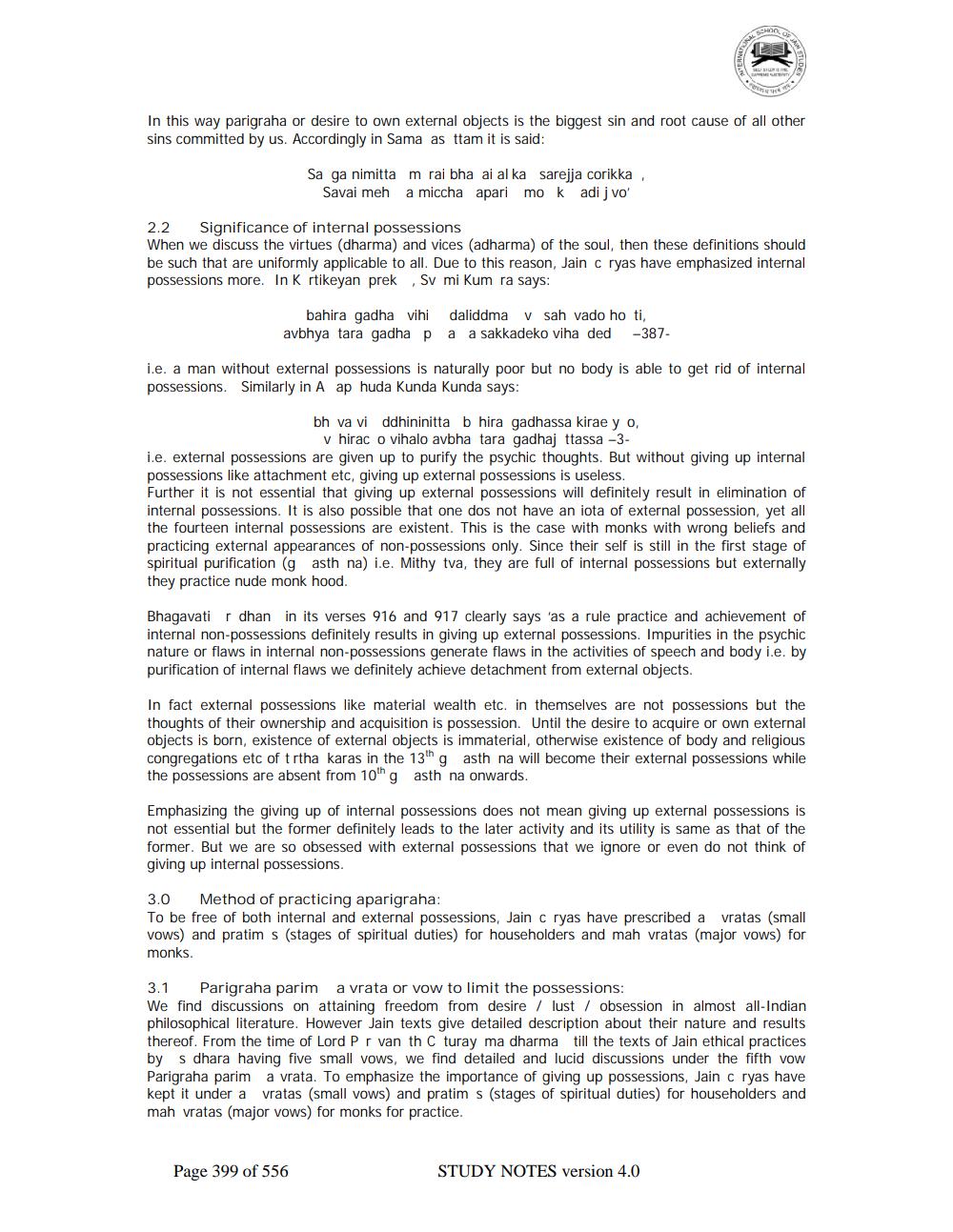________________
In this way parigraha or desire to own external objects is the biggest sin and root cause of all other sins committed by us. Accordingly in Sama as ttam it is said:
Sa ga nimittam rai bha ai al ka sarejja corikka,
Savai meh a miccha apari mo k adij vo'
2.2 Significance of internal possessions When we discuss the virtues (dharma) and vices (adharma) of the soul, then these definitions should be such that are uniformly applicable to all. Due to this reason, Jain c ryas have emphasized internal possessions more. In K rtikeyan prek Sv mi Kum ra says:
bahira gadha vihi daliddma v sah vado ho ti, avbhya tara gadha pa a sakkadeko viha ded -387
i.e. a man without external possessions is naturally poor but no body is able to get rid of internal possessions. Similarly in Aap huda Kunda kunda says:
bh va vi ddhininitta b hira gadhassa kirae y o,
v hirac o vihalo avbha tara gadhaj ttassa -3i.e. external possessions are given up to purify the psychic thoughts. But without giving up internal possessions like attachment etc, giving up external possessions is useless. Further it is not essential that giving up external possessions will definitely result in elimination of internal possessions. It is also possible that one dos not have an iota of external possession, yet all the fourteen internal possessions are existent. This is the case with monks with wrong beliefs and practicing external appearances of non-possessions only. Since their self is still in the first stage of spiritual purification (
g asth na) i.e. Mithy tva, they are full of internal possessions but externally they practice nude monk hood.
Bhagavati rdhan in its verses 916 and 917 clearly says 'as a rule practice and achievement of internal non-possessions definitely results in giving up external possessions. Impurities in the psychic nature or flaws in internal non-possessions generate flaws in the activities of speech and body i.e. by purification of internal flaws we definitely achieve detachment from external objects.
In fact external possessions like material wealth etc. in themselves are not possessions but the thoughts of their ownership and acquisition is possession. Until the desire to acquire or own external objects is born, existence of external objects is immaterial, otherwise existence of body and religious congregations etc of t rtha karas in the 13th g asth na will become their external possessions while the possessions are absent from 10h asth na onwards.
Emphasizing the giving up of internal possessions does not mean giving up external possessions is not essential but the former definitely leads to the later activity and its utility is same as that of the former. But we are so obsessed with external possessions that we ignore or even do not think of giving up internal possessions.
3.0 Method of practicing aparigraha: To be free of both internal and external possessions, Jain c ryas have prescribed a vratas (small vows) and pratim s (stages of spiritual duties) for householders and mah vratas (major vows) for monks.
3.1 Parigraha parim a vrata or vow to limit the possessions: We find discussions on attaining freedom from desire / lust / obsession in almost all-Indian philosophical literature. However Jain texts give detailed description about their nature and results thereof. From the time of Lord P r van th C turay ma dharma till the texts of Jain ethical practices by Sdhara having five small vows, we find detailed and lucid discussions under the fifth vow Parigraha parim a vrata. To emphasize the importance of giving up possessions, Jain c ryas have kept it under a vratas (small vows) and pratim s (stages of spiritual duties) for householders and mah vratas (major vows) for monks for practice.
Page 399 of 556
STUDY NOTES version 4.0




